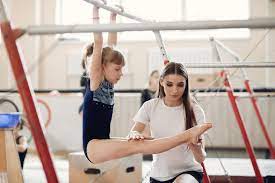Starting sport early in life sets children up for a future of movement, resilience, and joy. Among the many youth activities available, gymnastics for kids stands out for its physical, cognitive, and emotional rewards. When children engage in sport during their early developmental years, they don’t just gain skills—they build character, confidence, and healthy habits that can last a lifetime.
Let’s explore five meaningful benefits of introducing sport early—especially gymnastics—and why more Aussie parents are enrolling their kids before primary school even begins.
Why start gymnastics or sport at a young age?
Children’s brains and bodies develop rapidly in the early years. Introducing sport during this window helps hardwire key skills. Physical activity at this stage enhances motor coordination, social engagement, and problem-solving—all while kids are simply having fun.
This isn’t just theory—studies show that participation in sport before age seven positively influences emotional regulation, bone strength, and even academic achievement. Gymnastics for kids particularly fosters these traits due to its full-body, skill-based nature.
1. Improved Coordination and Motor Skills
Gymnastics is one of the best foundations for physical development because it introduces:
- Balance and spatial awareness
- Fine and gross motor control
- Hand–eye and foot–eye coordination
From forward rolls to handstands, children learn to control their bodies in space. This foundational physical literacy is transferable to nearly every other sport, from AFL to swimming. Early gymnastics can also help reduce the risk of injury later in life, as kids grow up knowing how to fall safely and recover quickly.
Authority Principle: According to Gymnastics Australia, programs for kids under five are now considered essential “movement literacy” for long-term athletic development.
2. Boosted Confidence and Self-Esteem
Mastering new skills builds self-belief. Whether it’s completing their first cartwheel or walking across a beam unassisted, every success fuels a child’s self-worth.
Gymnastics also teaches children that practice leads to progress. This mindset can help shape their approach to schoolwork, friendships, and future challenges.
Children who participate in sport early are:
- More likely to speak up in class
- Better at handling feedback
- Comfortable being seen trying, failing, and trying again
This consistent exposure to achievement through effort nurtures long-term confidence.
3. Social Development Through Teamwork and Structure
Even though gymnastics can seem like a solo sport, it’s inherently social. Kids learn:
- To listen and take turns
- To encourage others
- To follow group routines
Structured classes promote positive interactions and respectful communication. Coaches model kindness and discipline, helping children internalise behaviours they carry into school and home life.
Sport also introduces children to diversity—different abilities, personalities, and family backgrounds—helping them build empathy and social flexibility.
4. Better Focus and Academic Readiness
Movement isn’t just good for muscles—it’s good for minds. Regular physical activity has been shown to:
- Improve memory retention
- Support emotional regulation
- Increase focus and concentration in the classroom
Gymnastics for kids, in particular, strengthens a child’s ability to follow multi-step instructions and sequences—similar to how they’ll approach maths problems or reading comprehension.
Consistency Principle: Kids who follow a weekly sports routine tend to develop stronger daily habits, such as packing their own bag, finishing homework, or managing time better.
5. Lifelong Healthy Habits and Resilience
Children who enjoy sport early tend to stay active into adulthood. Starting young helps:
- Establish a positive relationship with exercise
- Make movement part of everyday life
- Reduce sedentary behaviours (e.g., screen time)
Gymnastics also builds resilience. Mistakes are expected. Falling is normal. But kids are taught to get up, reset, and try again. That mental toughness spills into other life areas—from school setbacks to playground squabbles.
And because sport triggers feel-good endorphins, it’s a protective factor against childhood anxiety and depression.
Why gymnastics for kids over other sports?
While all sports have benefits, gymnastics offers a unique combination of strength, balance, coordination, and discipline from day one. It doesn’t require prior skill or competitive drive—just curiosity and enthusiasm.
It’s also inclusive. Many gymnastics programs are non-competitive and cater to diverse ability levels, making it ideal for kids with different temperaments and needs.
Quick Summary: Benefits of Early Sport Participation
- Motor Skills: Builds coordination, balance, and control
- Confidence: Every win boosts self-esteem
- Social Growth: Encourages teamwork and communication
- Academic Readiness: Improves memory and focus
- Healthy Lifestyle: Sets lifelong patterns for activity and wellbeing
FAQs
What age can a child start gymnastics?
Many centres welcome children as young as 18 months through “kindergym” or parent-assisted programs. Most kids can participate independently from around age 3.
Is gymnastics safe for young children?
Yes. Reputable gymnastics centres use age-appropriate equipment and fully qualified instructors to ensure a safe environment. Injury rates are comparable to other children’s sports when proper supervision is in place.
What should my child wear to gymnastics?
Comfortable stretch clothing like leggings and a fitted t-shirt is best. Shoes aren’t needed—gymnastics is done barefoot to improve grip and balance.
Starting sport early is a gift that keeps giving—physically, emotionally, and socially. While all movement is good, structured activities like kids gymnastics classes offer extra benefits that ripple through every stage of a child’s development.
To explore beginner-friendly classes and movement programs for your little one, visit kids gymnastics classes.

